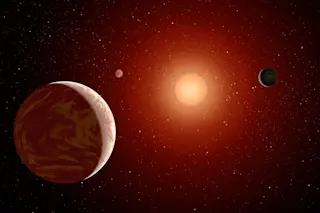Dwarf stars invisible to the naked eye could be hiding a wealth of exoplanets that contain liquid water and suitable conditions for life, according to a new study. The faint red stars make up some 58 billion of the 100-plus billion stars in the Milky Way, so the new findings greatly expand the prospects for planet hunting.
Scientists already knew that red dwarfs hosted planets, but the new study estimates what percentage of their planets orbit in a way that preserves liquid water and chances for life.
About a third maintain a “Goldilocks” orbit, the study says, that is just-right for water. That makes for a host of habitable new exoplanets – many hundreds of millions – seeing as a past study estimated that each red dwarf boasts, on average, three planets.
“This result is really important for the next decade of exoplanet research because eyes are shifting toward this ...














